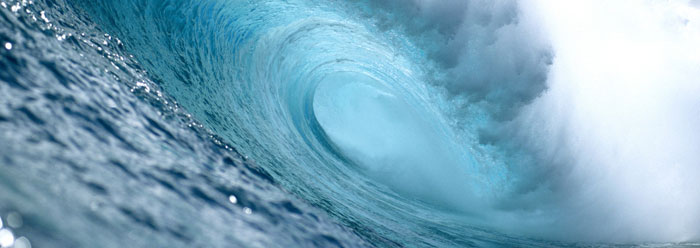Few doctrines in Scripture are as clearly taught as the global nature of the Great Flood in Noah's day. Genesis clearly teaches that "the waters . . . increased greatly . . . and the mountains were covered" (Genesis 7:18-20).
Through the centuries, few Christians questioned this doctrine. The Bible said it, and that was enough—until the late 1700s that is. For the first time the globe was being explored—the extremely lofty Himalayan Mountains were surveyed, capped by Mt. Everest at 29,035 feet in elevation. Did the waters cover them? Is there enough water on the planet to do so? The questions seemed so far-fetched that many European churchmen dismissed the idea that the Flood was global, adopting the local flood concept which still dominates Christian colleges and seminaries today. Like dominos, other doctrines soon began to fall—the young age for the earth, the special creation of plants and animals, and the inerrancy of Scripture.
We now know, of course, that the earth has plenty of water to launch a global flood. It has been calculated that if the earth's surface were completely flat, with no high mountains and no deep ocean basins, that water would cover the earth to a depth of about 8,000 feet. But is there enough water to cover a 29,035 foot mountain?
The key is to remember that the Flood didn't have to cover the present Earth, but it did have to cover the pre-Flood Earth, and the Bible teaches that the Flood fully restructured the earth. "The world that then was, being overflowed with water, perished" (II Peter 3:6). It is gone forever. The earth of today was radically altered by that global event.
That Flood accomplished abundant geologic work. Eroding sediments here, redepositing them there, pushing up continents, elevating plateaus, denuding terrains, etc., so that the earth today is quite different from before. Today even mountain ranges rise high above the sea.
Mt. Everest and the Himalayan range, along with the Alps, the Rockies, the Appalachians, the Andes, and most of the world's other mountains are composed of ocean-bottom sediments, full of marine fossils laid down by the Flood. Mt. Everest itself has clam fossils at its summit. These rock layers cover an extensive area, including much of Asia. They give every indication of resulting from cataclysmic water processes. These are the kinds of deposits we would expect to result from the worldwide, world-destroying Flood of Noah's day.
At the end of the Flood, after thick sequences of sediments had accumulated, the Indian subcontinent evidently collided with Asia, crumpling the sediments into mountains. Today they stand as giants—folded and fractured layers of ocean-bottom sediments at high elevations. No, Noah's Flood didn't cover the Himalayas, it formed them!
Thus we find the Biblical account not only possible, but also supported by the evidence. A pre-Flood world with lessened topographic extremes could have been covered by the Great Flood. That Flood caused today's high mountains and deep oceans making such a flood impossible to repeat. This is just as God promised, back in Genesis.
Cite this article: Morris, J. 2003. Did Noah's Flood Cover the Himalayan Mountains? Acts & Facts. 32 (9).














